Initial release 1976 Producer Bruce Parsons | Director Bill Stewart Cast Patrick Allen | |
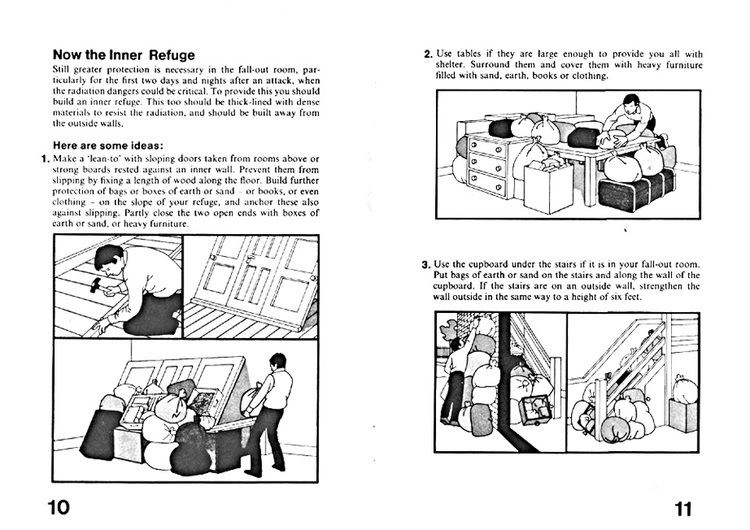 | ||
Similar Threads, When the Wind Blows, Duck and Cover, The War Game, Lonely Water | ||
The dubliners protect and survive
Protect and Survive is a public information series on civil defence produced by the British government during the late 1970s and early 1980s. It is intended to inform British citizens on how to protect themselves during a nuclear attack, and consists of a mixture of pamphlets, radio broadcasts, and public information films. The series had originally been intended for distribution only in the event of dire national emergency, but provoked such intense public interest that the pamphlets were authorised for general release.
Contents
- The dubliners protect and survive
- Protect and survive 03 what the warnings sound like
- Origins
- Wartime Broadcasting Service
- Publication of the pamphlet
- Political reaction
- Media
- Television
- Radio
- Cultural impact
- References
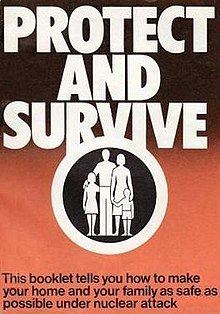
Protect and survive 03 what the warnings sound like
Origins
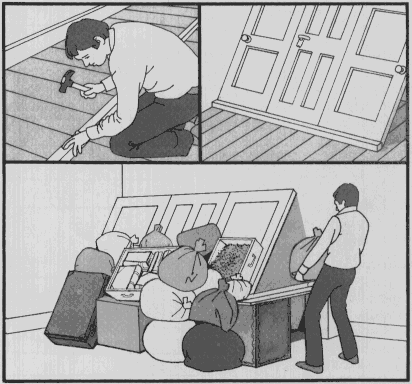
Protect and Survive had its origins in civil defence leaflets dating back to 1938, titled The Protection of Your Home Against Air Raids. These advised the homeowner on what to do in the event of air attack. This evolved as the nature of warfare and geopolitics changed, with the pamphlets concurrently updated into Advising the Householder on Protection against Nuclear Attack in 1963. This document, of which 500,000 copies were made, garnered considerable public and government criticism when it was first released for its lack of explanations or conveyance of the reasoning behind the advice that was given. The Estimates Committee were similarly bemused by the advice, calling for its withdrawal. Civil defence personnel were summoned to House of Commons meetings in which they responded to all the points of criticism that were raised. The 1963 pamphlet was then accompanied by a series of public information films produced in 1964, called Civil Defence Information Bulletins. These films were intended to be broadcast in a state of emergency. Pamphlets similar to those prepared in 1963 briefly appeared in Peter Watkins' controversial 1965 BBC docudrama The War Game, in a scene where they were distributed to people's homes. The 1964 Bulletins were not depicted in this controversial film.
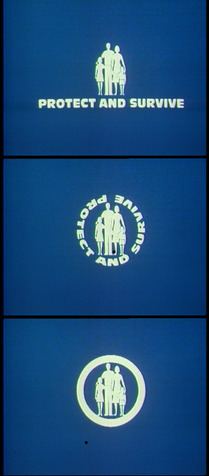
The fallout radiation advice in Protect and Survive was based on 1960s fallout shelter experiments summarized by Daniel T. Jones of the Home Office Scientific Advisory Branch in his report, The Protection Against Fallout Radiation Afforded by Core Shelters in a Typical British House which was published in Protective Structures for Civilian Populations, Proceedings of the Symposium held at Washington, D.C., April 19–23, 1965, by the Subcommittee on Protective Structures, Advisory Committee on Civil Defense, U.S. National Academy of Sciences, National Research Council. The fallout radiation was represented by measurements of the penetration of cobalt-60 gamma radiation, which has a high mean energy of 1.25 MeV (two gamma rays, 1.17 and 1.33 MeV). This is considerably more penetrating than the mean 0.7 MeV of fallout gamma rays. Therefore, the actual protection given against real nuclear weapon fallout would be far greater than that afforded in the peacetime cobalt-60 shielding measurements.
Wartime Broadcasting Service
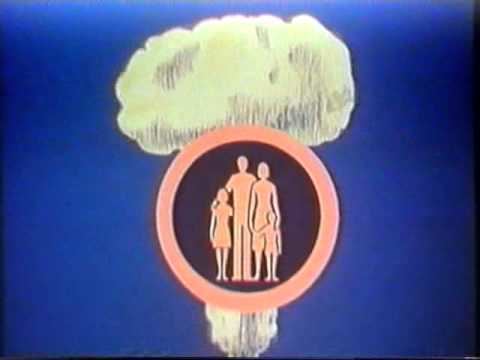
During the early 1970s, the BBC and the Home Office produced a radio script advising the public of what to do in the event of nuclear attack. This was eventually published in October 2008 on the BBC's website, with the full correspondence made available to the public via The National Archives. The script used very similar language and style to the later Protect and Survive series. In particular, it emphasised the need for citizens to remain in their homes, and not to try to evacuate elsewhere.
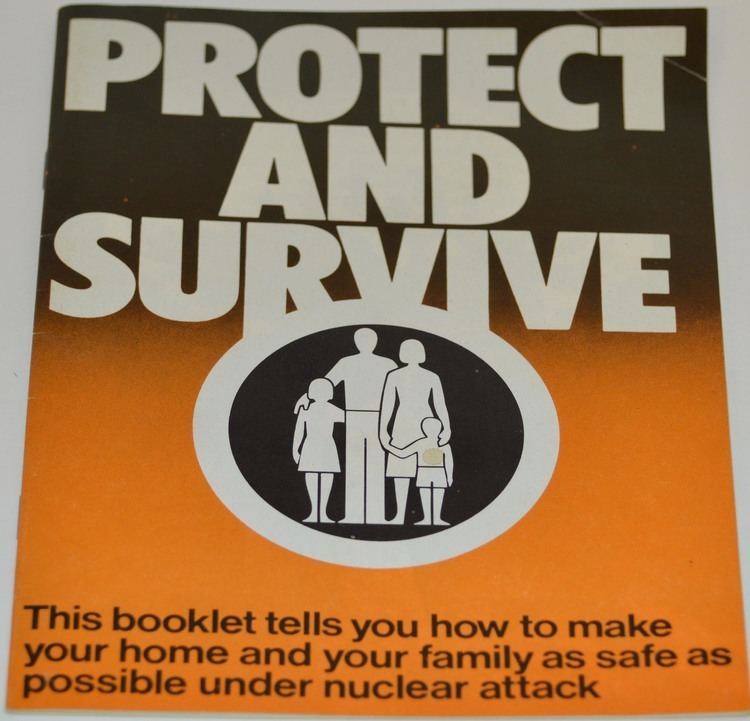
During the exchange of correspondence between the BBC and various government departments, several letters seem to suggest that a booklet for public consumption was already being discussed. In a letter from the Central Office of Information, dated 12 March 1974, a request for information from The Home Office about a proposed booklet read as follows:
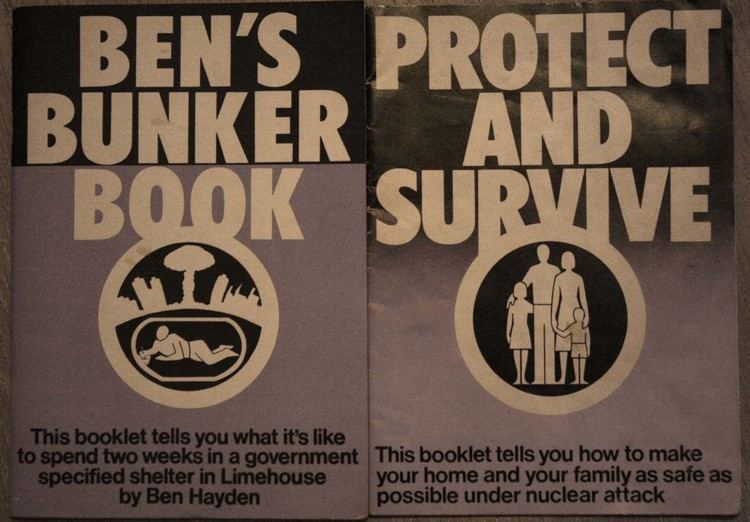
Meanwhile I should be grateful if you could let me have a copy of your revised advice to the householder. I will assume that this will form the text of the Official Announcement and that what Probert is discussing with your Information Division is the production of a booklet on public advice.
This was replied to on 15 March 1974 by the Home Office, clearly stating that such a booklet was being produced, and that they were also targeting the same information at television:
It seems likely a basic booklet will be produced... we expect rather more attention to be paid to the dissemination of this advice through other media, in particular television.
Publication of the pamphlet
Protect and Survive was formally published in May 1980, but had come to the public's attention before that via a series of articles in The Times newspaper in January 1980. This wave of interest had been preceded by numerous letters to The Times in December 1979 questioning what Civil Defence arrangements were in place in the UK.
This was then followed by a Times leader on 19 January 1980 which noted that: "In Britain, a Home Office booklet "Protect and Survive" remains unavailable." Following this unexpected publicity for Protect and Survive, The Minister of State at the Home Office, Leon Brittan, responding on the subject in the House of Commons on 20 February 1980 said that:
...attention has been focused on the decision of the Home Office not to publish, in advance of an imminent attack, the pamphlet entitled "Protect and Survive". It is not a secret pamphlet, and there is no mystery about it. It has been available to all local authorities and chief police and fire officers and to those who have attended courses at the Home Defence College at Easingwold. It has been shown to interested Members of Parliament and to journalists. It has not been published, for the simple reason that it was produced for distribution at a time of grave international crisis when war seemed imminent, and it was calculated that it would have the greatest impact if distributed then.
The Minister then went on to say the Home Office had received over 200 letters from the public on civil defence. It seems extremely likely that from pressure inside and outside Parliament, Protect and Survive was then published by the Government in May 1980. There is little to suggest that the Government ever intended the pamphlet to be made available for general sale had it not attracted this much attention.
Political reaction
Organizations such as the Campaign for Nuclear Disarmament protested that the pamphlet, by popularising the idea that a nuclear war could be survived, made such a war more likely. The protest organisations published and sold large numbers of copies of the pamphlet, considering that widespread reading of the pamphlet could only discredit the government's policy. Counter-pamphlets such as "Protest and Survive" by E P Thompson or "Civil Defence, whose Defence," by the Disarmament Information Group replied to the pamphlet's arguments.
Media
The purpose of the Protect and Survive scheme is to provide members of the British public with instructions via print and broadcast media on how to protect themselves and survive a nuclear attack. The scheme is not intended to be made public during peacetime and only if a nuclear attack has been deemed likely by the Government during any international crisis, that the information would be disseminated via print and broadcast media. All this information detailed a series of steps recommended to be undertaken by civilians of the UK to improve their chances of survival in the event of nuclear attack.
The primary instructional booklet under the same name was prepared in 1976 and released in May 1980: during peacetime, the booklet was priced at 50 pence, but would be widely distributed freely to all households in the United Kingdom if the risk of nuclear attack increased. This was complemented in 1981 by two booklets regarding the construction of fallout shelters: Domestic Nuclear Shelters, with techniques for building a home shelter, and Domestic Nuclear Shelters - Technical Guidance, for the design and construction of long-term and permanent shelters, some of which involved elaborate designs.
The contents of the booklets would also be printed in national newspapers if the risk of nuclear attack increased.
In response to extensive criticism of Protect and Survive, Civil Defence: Why We Need It was also printed in November 1981 by the Home Office, which attempted to defend the reasons for civil defence.
Television
Protect and Survive was adapted for television as a series of twenty short Public Information Films. These films were produced by Richard Taylor Cartoons, who also produced the Charley Says child safety films and the Crystal Tipps and Alistair animated series, and were narrated by Patrick Allen. The films are similar in content to the booklets, detailing the same instructions using voice-over narration, sound effects, and a combination of simple stop-motion and illustrated animation. Each episode concluded with a distinctive electronic musical phrase.
The series was considered classified material that was intended for transmission on all television channels only if the government determined that nuclear attack was likely within 72 hours, although recordings were leaked to organisations like CND and press organisations like the BBC, who broadcast it on Panorama as a discussion of public affairs, on 10 March 1980, shortly after the Soviet invasion of Afghanistan.
Radio
A collection of recordings for radio transmission were produced as part of the programme. These differ slightly from the films in that the voice was provided not by Patrick Allen but by both male and female voices. In addition, certain portions of the instructional copy are changed slightly. A small portion of these recordings is heard in Threads during the scene where the character of Bill Kemp is discussing removing internal doors to use for their shelter.
Cultural impact
The programme created a substantial impact upon the popular culture of the UK of the early 1980s, most notably in music. Film series narrator Patrick Allen was featured in certain early remixes of the song "Two Tribes" by the UK pop band Frankie Goes to Hollywood, saying, "Mine is the last voice you will ever hear. Do not be alarmed," in a tone similar to that used by him in the PIFs.
Rock band Jethro Tull recorded a song called "Protect and Survive" on the 1980 album A, also criticising the initiative. The title of a song by the hardcore punk/D-beat band Discharge featured a play on words ("Protest and Survive"), a reference to E. P. Thompson's anti-nuclear manifesto (see below). Heavy metal band Wolfsbane's self-titled album contains a song called "Protect and Survive."
The Scottish rock band Runrig released a song entitled "Protect and Survive," which has an apocalyptic theme, on their 1987 album, The Cutter and The Clan. The same year, Irish folk group The Dubliners also released a song entitled "Protect and Survive" on their album 25 Years Celebration. It was written and composed by John David Clifton, and sung by Sean Cannon.
In print, Raymond Briggs' graphic novel When the Wind Blows (later adapted as an animated film, radio and stage play) obliquely mentions various aspects of the Protect and Survive programme, and the BBC play Threads featured three of the series' films: Stay at Home, Action After Warnings and Casualties. The leaflet series became the subject of detailed and scholarly criticism from anti-nuclear authors (such as E. P. Thompson), who produced a counterargument entitled Protest and Survive. Louise Lawrence's children's novel Children of the Dust refers to one of the inner refuge designs mentioned in the leaflets, and to the public information films and radio tapes.
On television, Protect and Survive was thoroughly lampooned in the television series "The Young Ones" episode "Bomb." The Protect and Survive booklet appears on-screen during the episode. Also, in the Spooks episode "Nuclear Strike," the character Malcolm is seen viewing one of the information videos.
In the video game Fallout 2 intro, there is a parody of Protect and Survive information on what to do when leaving the shelters. The manual for Introversion Software's video game Defcon parodies Protect and Survive.
In a Channel 4 poll of the 100 scariest moments, Protect and Survive came 89th, just above Tod Browning's 1931 Dracula. The explanation for this, as explained by some celebrities on the show, was because of the films' grim instructions, unsettling music and the fact that "a nuclear war was one of the most disastrous things that could happen."
An Italian play called Protect and Survive. Vivere e amare sotto la minaccia nucleare (Live and love under the fallout menace) written and performed by Melania Fiore and Aldo E. Castellani, was based on the films. The play went on stage on November 2011 in Rome.
The full version is shown on a loop underground at the Hack Green Secret Nuclear Bunker in Cheshire. Other copies are shown on loops at the Imperial War Museums in London and Manchester.
